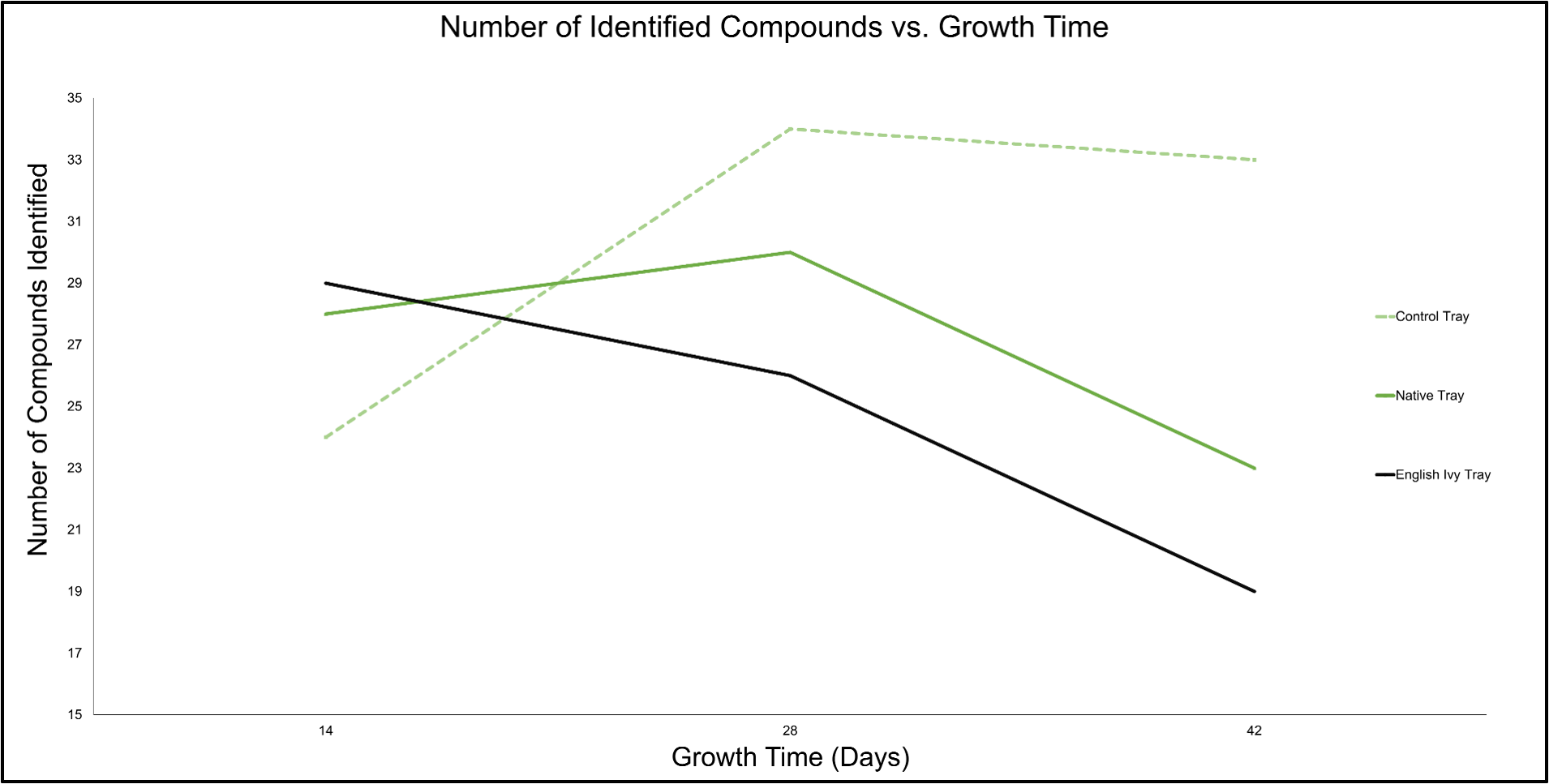Comparing Allelochemicals of English Ivy and Native Georgia Plants
Abstract
English Ivy (Hedera helix L.) is a common invasive plant causing biodiversity losses across the southeast and parts of the northwestern US.
The mechanisms by which Ivy invades native ecosystems are not well understood but may include allelopathy, a process through which one species produces biochemicals that disrupt the germination and growth of competitors. These biochemicals are often produced and exuded by roots into soil, making them difficult to isolate.
This study uses a soil-less hydroponic system to examine differences in the chemicals produced by roots of native Georgia plants (Natives) and English Ivy.
Methods
• Native plants (e.g. Virginia creeper, muscadine grapes, etc.) and Ivy were collected in Marietta, GA, washed, and transferred to hydroponic systems with growth trays, water reservoirs, and circulating pumps.
• Native plants were allowed to grow with or without English Ivy for 42 days. A third tray served as a blank and was kept empty.
• Organic chemicals were adsorbed to activated carbon particles submerged in the trays.
• On days 14, 28, and 42 extracts from the activated carbon were analyzed using Gas Chromatography-Mass Spectroscopy.
Results
Total number of compounds identified by Gas Chromatography-Mass Spectroscopy over time. Chemical diversity decreased in trays with plants, while diversity in the control tray increased. We believe this suggests that the addition of competition (caused by adding more plants) changes the chemicals produced by microbial activity and possibly algae in this experiment.
The ten most-abundant compounds by percent composition in each tray on days 14, 28 and 42. In every tray, chemical diversity decreased over time. One chemical became the major contributor in
Changes in percent composition of selected organic chemicals detected in hydroponic solution over time. Changes were not consistent in all three trays. The English Ivy tray saw results much different than the native and control tray.
Summary
Our results suggest there are differences in the diversity and abundance of root exudates produced by English Ivy and the exudates produced by the natives of Georgia’s forests.
In trays containing plants, decreases in compound diversity over time (Figs. 2 and 3) may indicate a competitive interaction between plants and microbes such as algae. For instance, the presence of Ivy reduced the amount of 2-Piperidinone (Fig. 4c) which was abundant in the control and native treatments.
Because chemical changes over time were not consistent among treatments, the Natives and Ivy may alter the soil microbiome in unique ways. Previous research shows that butylated hydroxytoluene (Fig. 4a) is used by some plants to help prevent radical damage, and sulfur deposition (Fig. 4b) has hindered seed germination in other studies (Wang, 2016).
Both methods may allow ivy to outcompete native plants. Further research should explore the competitive outcomes between these plants and soil microbes and the potential allelopathy of the chemicals identified here.





